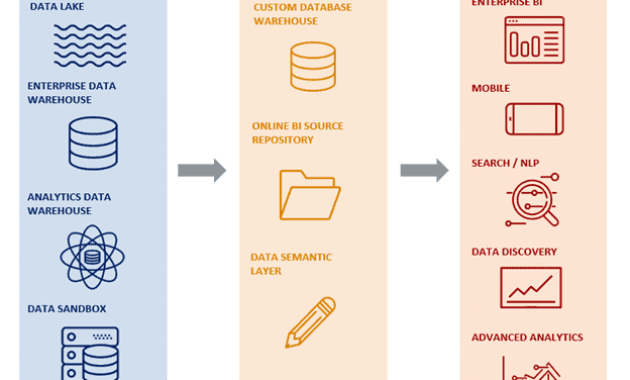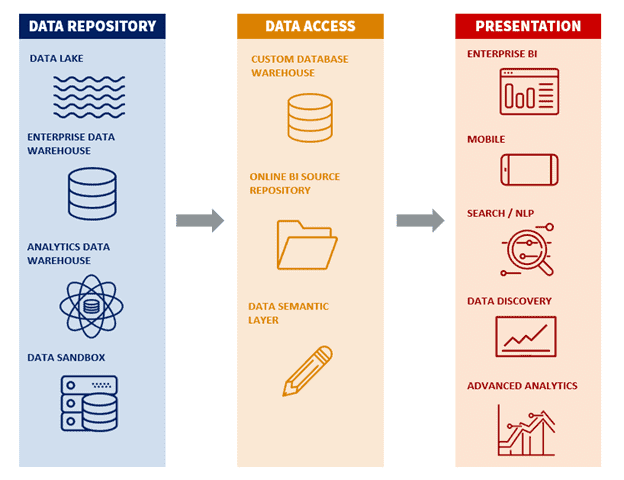
Self-Service Business Intelligence Software: Empowering Teams Through Data Autonomy
In today’s fast-paced business environment, the ability to make informed decisions quickly is critical. Organizations are drowning in data, but unlocking its potential requires more than just collecting it. The rise of self-service business intelligence software is transforming how businesses operate. It is empowering employees across departments to access, analyze, and interpret data without relying heavily on IT or data science teams. This shift promotes autonomy and accelerates data-driven decision-making.
Self-service business intelligence (BI) software is a game-changer. It provides user-friendly interfaces and intuitive tools. These tools allow individuals with varying technical skills to explore data independently. Instead of submitting requests to a central team, users can build reports, create dashboards, and uncover insights. This independence fosters a data-driven culture and boosts overall efficiency. This article explores the benefits and features of self-service business intelligence software. It also examines how it can transform your organization and increase team autonomy.
Understanding Self-Service Business Intelligence
At its core, self-service business intelligence software is designed to put the power of data analytics into the hands of business users. Traditional BI solutions often required specialized skills and extensive training. This created bottlenecks and limited the ability of non-technical users to access data. Self-service BI breaks down these barriers. It provides a platform where anyone can connect to data sources, visualize data, and generate insights. This accessibility is crucial for promoting data literacy and enabling data-driven decisions at all levels of an organization.
The key features of self-service BI software include:
- User-Friendly Interface: Intuitive drag-and-drop interfaces and visual tools make it easy for users to navigate and analyze data.
- Data Connectivity: Seamless integration with various data sources, including databases, cloud services, and spreadsheets.
- Data Visualization: A wide range of charts, graphs, and dashboards to represent data visually and facilitate understanding.
- Data Exploration: Tools to drill down into data, filter information, and identify trends and patterns.
- Reporting and Sharing: Capabilities to create and share reports and dashboards with colleagues and stakeholders.
Self-service business intelligence software empowers users. It reduces the reliance on IT and data science teams. This allows these teams to focus on more complex tasks. It also accelerates the decision-making process. By providing instant access to data, users can quickly identify problems, evaluate opportunities, and make informed choices. This agility is invaluable in today’s competitive landscape.
The Benefits of Self-Service BI: Boosting Autonomy
The adoption of self-service business intelligence software brings many advantages to businesses. One of the most significant is the increase in autonomy. Employees gain the freedom to explore data and generate insights without relying on external resources. This independence empowers them to take ownership of their data analysis and decision-making processes. This leads to several positive outcomes:
- Increased Efficiency: Eliminates the need to wait for reports or analyses from central teams.
- Faster Decision-Making: Provides quick access to data, enabling rapid identification of issues and opportunities.
- Improved Data Literacy: Encourages employees to engage with data and develop analytical skills.
- Enhanced Collaboration: Facilitates data sharing and collaboration across departments.
- Reduced Costs: Lowers the burden on IT and data science teams.
Self-service BI fosters a culture of data empowerment. It enables employees to make decisions based on evidence rather than intuition. This leads to better outcomes and improved business performance. The autonomy gained through self-service business intelligence software is a catalyst for innovation. It allows teams to experiment with new ideas and identify opportunities for improvement.
Features to Look for in Self-Service BI Software
Choosing the right self-service business intelligence software is crucial for success. Several key features will determine its effectiveness. Consider these features when evaluating different solutions:
- Ease of Use: The software should have an intuitive interface. It should be easy to learn and use, even for non-technical users.
- Data Connectivity: Ensure the software can connect to all relevant data sources.
- Data Visualization Capabilities: Look for a wide range of charts and graphs.
- Data Exploration Tools: The software should offer robust data exploration tools.
- Collaboration Features: Look for features that facilitate data sharing and collaboration.
- Security and Governance: Ensure that the software has strong security features.
- Scalability: The software should be able to handle growing data volumes.
The right self-service BI solution will offer a balance. It will be easy to use and powerful enough to meet your organization’s data analysis needs. Evaluate different software options based on these criteria. Consider the specific requirements of your business.
How to Implement Self-Service BI Successfully
Implementing self-service business intelligence software requires careful planning and execution. Here are some steps to ensure a successful implementation:
- Define Your Goals: Identify the specific business goals you want to achieve. Determine the key performance indicators (KPIs) you will track.
- Assess Your Data Sources: Identify all the data sources you need to connect to. Evaluate the quality and completeness of your data.
- Choose the Right Software: Select a self-service BI tool that meets your needs. Consider ease of use, features, and scalability.
- Provide Training and Support: Offer training to employees on how to use the software. Provide ongoing support to ensure users can effectively use the tools.
- Establish Data Governance: Implement data governance policies to ensure data accuracy.
- Promote Data Literacy: Encourage employees to engage with data. Foster a culture of data-driven decision-making.
- Monitor and Iterate: Continuously monitor the use of the software. Gather feedback from users. Make adjustments as needed to optimize performance.
A successful implementation of self-service business intelligence software is a journey. It requires ongoing effort and adaptation. By following these steps, you can maximize the value of your investment. You can transform your organization into a data-driven powerhouse. The goal is to empower your employees to make informed decisions. This strategy will lead to better business outcomes.
Real-World Examples of Self-Service BI in Action
Many organizations are using self-service business intelligence software to achieve remarkable results. Here are a few examples:
- Retail: Retailers use self-service BI to analyze sales data. They identify trends, optimize inventory, and personalize customer experiences.
- Healthcare: Healthcare providers use self-service BI to analyze patient data. They improve patient outcomes and optimize operational efficiency.
- Manufacturing: Manufacturers use self-service BI to monitor production processes. They can identify bottlenecks and improve efficiency.
- Finance: Financial institutions use self-service BI to analyze financial data. They can improve risk management and fraud detection.
These examples demonstrate the versatility of self-service BI. It can be applied across various industries and departments. The key is to identify the specific needs of your business. Then, you need to select the right software and implement it effectively. These solutions are designed to boost autonomy.
The Future of Self-Service BI
The future of self-service business intelligence software is bright. As technology continues to evolve, we can expect to see several trends:
- Increased Automation: Automation will play a bigger role. Expect automated data preparation and analysis.
- Advanced Analytics: More sophisticated analytics capabilities will emerge. This includes machine learning and artificial intelligence.
- Enhanced Collaboration: Collaboration features will become more integrated. Expect better data sharing and teamwork.
- Mobile BI: Mobile access will become increasingly important. This allows users to access data on the go.
- Integration with Other Tools: Self-service BI will integrate with other business applications. This will enhance productivity and efficiency.
Self-service business intelligence software is essential. It is a key component of any modern data strategy. Businesses that embrace this technology will be well-positioned. They will gain a competitive advantage. These businesses will thrive in today’s data-driven world. They will boost autonomy.
Conclusion: Embracing Data Autonomy with Self-Service BI
Self-service business intelligence software is revolutionizing the way businesses operate. It empowers employees to access, analyze, and interpret data. This promotes autonomy and accelerates data-driven decision-making. By investing in the right self-service BI solution, organizations can unlock the full potential of their data. They can transform their operations and achieve significant business outcomes. The ability to make data-driven decisions quickly is a key advantage. It is essential for success in today’s competitive landscape. Embrace the power of self-service business intelligence software. Start your journey towards data autonomy and unlock your organization’s full potential. [See also: Choosing the Best BI Software for Your Business] [See also: Data Governance Best Practices for Self-Service BI] [See also: The Role of Data Literacy in a Data-Driven Culture]

